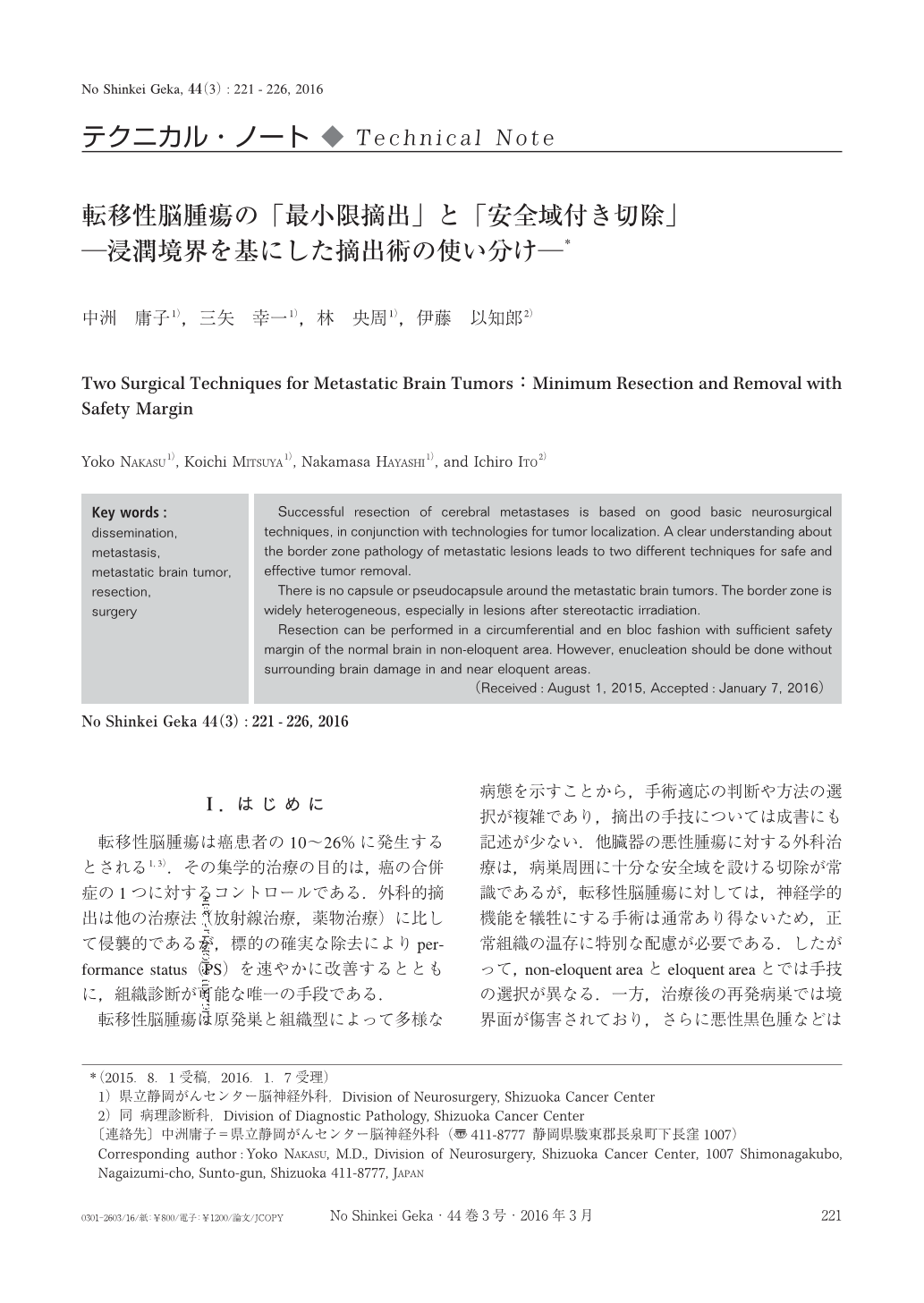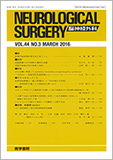Japanese
English
- 有料閲覧
- Abstract 文献概要
- 1ページ目 Look Inside
- 参考文献 Reference
Ⅰ.はじめに
転移性脳腫瘍は癌患者の10〜26%に発生するとされる1,3).その集学的治療の目的は,癌の合併症の1つに対するコントロールである.外科的摘出は他の治療法(放射線治療,薬物治療)に比して侵襲的であるが,標的の確実な除去によりperformance status(PS)を速やかに改善するとともに,組織診断が可能な唯一の手段である.
転移性脳腫瘍は原発巣と組織型によって多様な病態を示すことから,手術適応の判断や方法の選択が複雑であり,摘出の手技については成書にも記述が少ない.他臓器の悪性腫瘍に対する外科治療は,病巣周囲に十分な安全域を設ける切除が常識であるが,転移性脳腫瘍に対しては,神経学的機能を犠牲にする手術は通常あり得ないため,正常組織の温存に特別な配慮が必要である.したがって,non-eloquent areaとeloquent areaとでは手技の選択が異なる.一方,治療後の再発病巣では境界面が傷害されており,さらに悪性黒色腫などは播種傾向が強いので,摘出には安全域が必要になる.本稿では2つの手技,すなわち腫瘍表面を剝離する最小限摘出術(ギリギリ法)と,安全域付き切除術(ザックリ法)とを解説し,治療戦略を整理する.
Successful resection of cerebral metastases is based on good basic neurosurgical techniques, in conjunction with technologies for tumor localization. A clear understanding about the border zone pathology of metastatic lesions leads to two different techniques for safe and effective tumor removal.
There is no capsule or pseudocapsule around the metastatic brain tumors. The border zone is widely heterogeneous, especially in lesions after stereotactic irradiation.
Resection can be performed in a circumferential and en bloc fashion with sufficient safety margin of the normal brain in non-eloquent area. However, enucleation should be done without surrounding brain damage in and near eloquent areas.

Copyright © 2016, Igaku-Shoin Ltd. All rights reserved.


